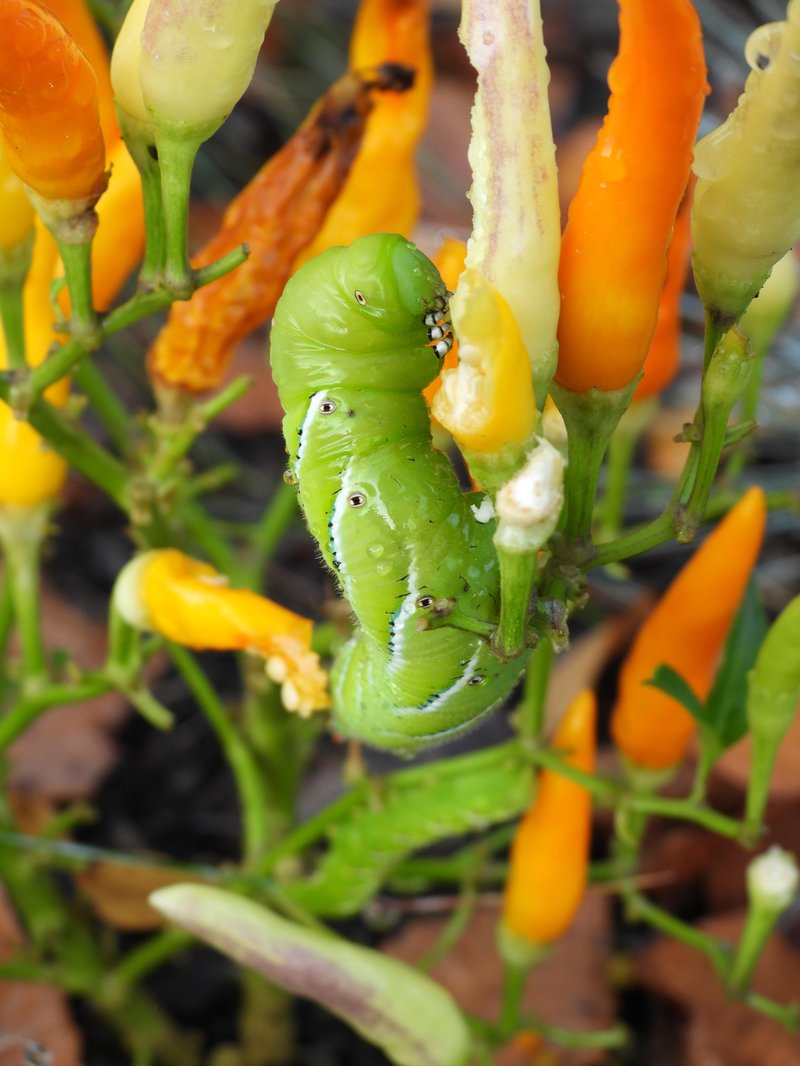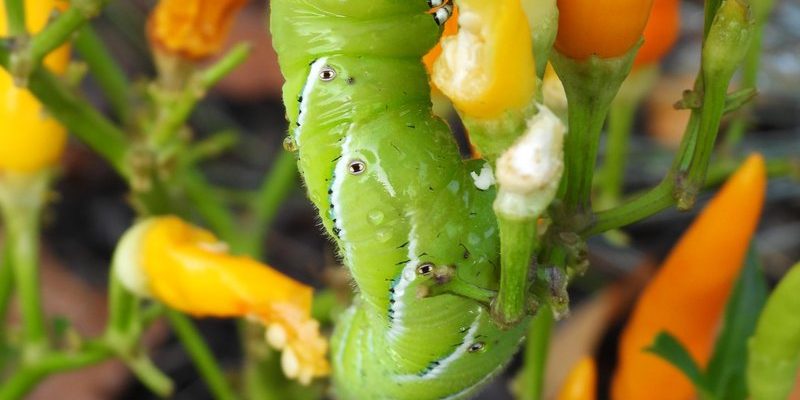
So, what’s the deal with their feeding habits? Essentially, hornworms are like tiny, green vacuum cleaners that can devour a lot of foliage in a short time. Understanding how they eat and what they prefer can help you manage their presence in your garden. It’s almost like figuring out the dietary preferences of a quirky houseguest. Let’s dive into their feeding habits, and along the way, I’ll share some tips to help you keep your plants safe.
What Are Hornworms?
Hornworms are the larvae of certain species of moths, primarily from the Sphingidae family. There are a couple of common types you might encounter in your garden: the **tobacco hornworm** and the **tomato hornworm**. Both of these caterpillars have their own specific plants they love to munch on, making it essential for you to know which one you’re dealing with.
These critters are known for their distinctive appearance. They’re large, with a pronounced horn-like tail, which gives them their name. This horn can make them look a bit intimidating, but trust me, they’re not out to harm you—they just want to feast on your plants.
Understanding the specific species in your garden helps you know what to expect regarding their feeding habits. The tobacco hornworm tends to munch on tobacco plants, while the tomato hornworm has a fondness for tomatoes, peppers, and eggplants. They can become a real concern if you’re growing these vegetables!
The Feeding Preferences of Hornworms
Hornworms have a diet that primarily consists of the leaves of certain plants. They are particularly fond of nightshade family plants, which include tomatoes, potatoes, eggplants, and peppers. This means if you’re cultivating any of these veggies, you might find hornworms feasting on them.
Honestly, these little guys have voracious appetites. In just one week, a single hornworm can consume a whole tomato leaf or even a significant amount of fruit! Because of their rapid growth, they often need to eat continuously to keep up with their development. Here’s a neat little analogy: it’s like having a teenage boy in your kitchen who seems to be perpetually hungry!
If you’re growing any plants in your garden, keep an eye out for signs of hornworm damage. Often, you’ll see large, uneven holes in leaves or even entire branches stripped bare. Recognizing these patterns can help you identify what’s going on before it’s too late.
How Do Hornworms Eat?
You might be curious about how hornworms manage to devour so much plant material in such a short period. Well, their feeding mechanism is pretty unique. Hornworms have strong mandibles that allow them to tear apart leaves efficiently.
What’s fascinating is that hornworms tend to eat in a way that maximizes their intake while minimizing effort. They usually start at the tip of a leaf and work their way down, often leaving large portions behind. It’s almost as if they’re picky eaters—only going after the parts they find most delectable.
During the day, hornworms typically hide under the leaves, where they blend in with their surroundings. They’re masters of camouflage! You might not even notice them, but come sunset, they start their feeding frenzy. This is the time when gardening becomes a true test of your observation skills, as you’ll need to find them before they make your plants their buffet.
Signs of Hornworm Damage
As a gardener, it’s essential to recognize when hornworms are making a meal out of your plants. Here are some key signs to watch for:
- Holes in leaves: Look for large, irregular holes. If you see that the leaves are disappearing, hornworms could be the culprits.
- Frass: This is just a fancy word for caterpillar poop. If you spot tiny dark pellets on the ground under your plants, it’s a red flag.
- Changes in growth: If your plants suddenly stop growing or show signs of wilting, that can be linked back to hornworm feeding.
It’s a shame to see your hard work being munched on, but recognizing these signs early can help you act quickly. Ignoring the symptoms can lead to significant damage, and who wants that?
Managing Hornworms in Your Garden
If you find that hornworms have invaded your garden, don’t panic! There are several ways to manage their population and protect your plants. Here are a few approaches:
1. **Handpicking**: This is the most straightforward method. Just check your plants regularly, especially during the evening when they’re most active. Wearing gloves can make this a bit easier if you’re squeamish about touching them.
2. **Natural Predators**: Encourage natural predators like wasps, birds, and beneficial insects. They can help keep the hornworm population in check without harming your plants.
3. **Insecticidal Soap**: If you’re dealing with a larger infestation, consider using insecticidal soap or neem oil. These are less harmful to beneficial insects compared to other pesticides.
4. **Plant Diversity**: Sometimes, planting a variety of plants can deter hornworms. They tend to focus on their favorite plants, so incorporating other species might help distract them.
Here’s the thing: keeping an eye on your garden and taking proactive steps can help you manage hornworms effectively.
Preventing Future Infestations
Once you’ve dealt with a hornworm problem, you might wonder how to prevent them from returning. Here are some tips to help safeguard your garden:
– **Crop Rotation**: Change the location of your plants each season. This can confuse pests and interrupt their life cycles.
– **Healthy Soil**: Healthy plants are less prone to infestations. Make sure you’re taking care of your soil with the right nutrients and compost.
– **Companion Planting**: Certain plants can repel hornworms. For example, marigolds can deter many pests, making them a great addition to your garden.
– **Regular Monitoring**: Keep an eye on your plants throughout the growing season. Early detection is crucial to controlling any pests.
Being proactive about prevention can help you avoid the headaches that come with hornworm infestations.
Hornworms can be both a captivating and challenging part of home gardening. Understanding their feeding habits shed light on how to protect your plants effectively. By recognizing their signs, managing their presence, and taking steps to prevent future infestations, you can enjoy a healthy garden.
Remember, while these critters can cause some damage, they also remind us of the intricate web of life in our gardens. Embrace the journey, and don’t hesitate to share your experiences. Happy gardening!

